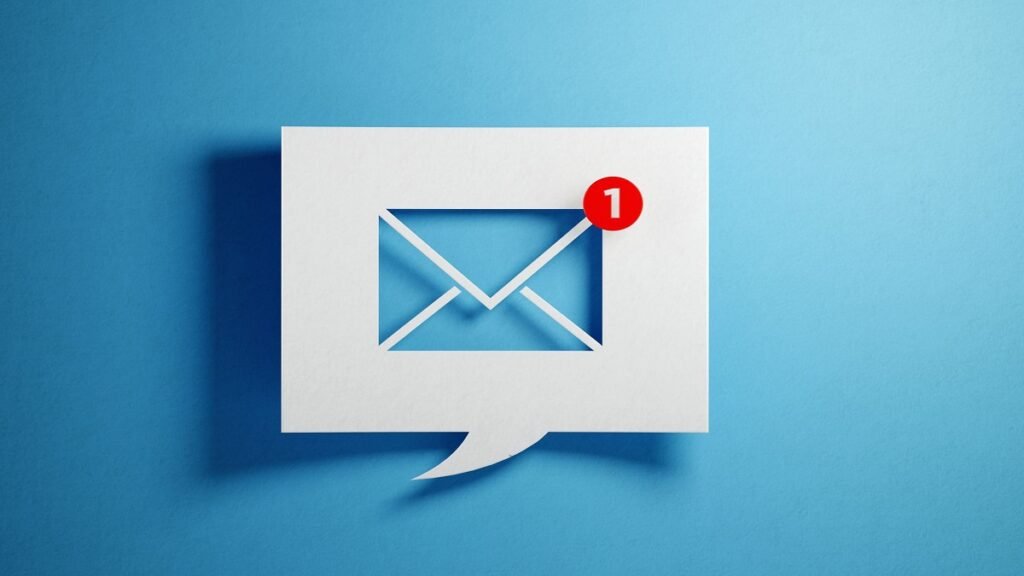Email is still one of the best ways to communicate, whether for personal, professional, educational, or medical purposes. However, spam filters, commercial tabs, and excessive security measures often make it impossible for important emails to reach recipients’ inboxes. Knowing reasons why email whitelisting is important is vital.
By adding a sender’s email or domain to a trusted-senders list (often called whitelisting), you increase the likelihood that legitimate messages reach the inbox, avoiding classification as spam by basic filters. Whitelisting is an important deliverability measure—though it should not be relied on as a primary security mechanism. It improves email reach, but security depends on additional protections.
This post will go over some reasons why email whitelisting is crucial, dissecting its advantages in-depth so you can see why it should be a part of your digital communication plan.
Reasons You Should Focus on Email Whitelisting

1. Ensures Important Emails Get to the Inbox
Email whitelisting increases the likelihood that important communications reach your inbox without being incorrectly filtered as spam. Spam filters are supposed to keep out dangerous or irrelevant information, but they might be too severe and mark real emails as spam.
You can miss important emails like customer proposals, employment offers, bills, or security verification emails if this happens. This may be frustrating and create delays for people. For companies, missing just one email might mean lost money, broken relationships, or missed chances.
By adding trusted senders to your whitelist, you make sure that important emails get to you immediately, so you can answer swiftly and avoid delays that might have been avoided. This modest measure keeps both personal and work relationships safe.
2. Strengthens Business Relationships
In professional situations, timely communication is vital, since customers, partners, and stakeholders want rapid, dependable replies. However, when critical emails are filtered into spam, it might convey the image of being unprofessional, inattentive, or unorganized.
Email whitelisting helps reduce delivery issues by making communication channels more consistent. It also stops people from saying they never saw your communication, which may lead to unpleasant situations, and also helps minimize delays and misunderstandings. By encouraging customers or partners to whitelist their domain, organizations eliminate friction and increase dependability.
This simple step helps maintain consistent, reliable communication with contacts. Ultimately, whitelisting not only ensures easy interactions but also preserves and enhances long-term professional connections, leading to greater cooperation and overall success.
3. Boosts the Efficiency of Email Marketing
Email marketing frequently demonstrates a strong return on investment, often outperforming other digital channels. However, this return is only feasible when messages actually reach the inbox. If newsletters, promotions, or updates are diverted to spam or promotional folders, even the greatest efforts fail.
Encouraging subscribers to whitelist your email boosts exposure, leading to increased open rates and click-through rates (CTR). The knowledge of what email whitelisting is also enhances brand interaction and boosts your sender reputation, since ISPs check engagement levels.
By requesting new subscribers to whitelist your address in the welcome email, you set the groundwork for long-term deliverability and success. This proactive step strengthens early deliverability and supports long-term email engagement.
4. Prevents Misunderstandings and Missed Deadlines
In areas such as healthcare, banking, and education, rapid communication is not merely convenient but frequently vital for compliance, security, and safety. Missing essential emails may result in expensive misunderstandings and dangerous repercussions.
For example, parents may miss exam schedule updates from a school, customers may not notice crucial financial portfolio adjustments, or patients might skip test findings and appointment information if emails are routed into garbage folders. These omissions may generate tension, misunderstanding, and even legal or regulatory difficulties.
Email whitelisting reduces the chance of important emails being misclassified as spam. It helps reduce unnecessary misunderstandings, enables proper information exchange, and helps companies fulfill deadlines consistently without relying on chance or uneven filtering methods.
5. Helps With Sender Recognition
While whitelisting improves deliverability, it should not be treated as a phishing-defense method. Email inboxes are routinely bombarded with bogus communications masquerading as reliable sources.
Whitelisting helps users easily recognize emails from trusted contacts, but it should not be used as a phishing-prevention method. For firms, this technique helps employees more easily recognize frequent or trusted communication sources.
IT teams may also teach workers more effectively by referring to the whitelist as a secure reference point. This decreases the odds of staff falling for phishing efforts masquerading as customer emails. Whitelisting narrows down who you choose to prioritize, but it does not replace security tools.
6. Saves Time and Increases Productivity
Time lost checking spam folders or tracking missed messages may easily mount up, particularly for teams handling significant email volumes daily. These inefficiencies not only delay answers but also interrupt processes. Email whitelisting removes this issue by ensuring trustworthy communications always appear immediately in the inbox.
It lowers the need to continually check spam folders, saves needless back-and-forth to confirm receipt, and simplifies communication operations. With priority delivery, staff may concentrate on productive work instead of retrieving lost emails.
For companies, the time saved translates into increased production, smoother operations, and improved efficiency across teams. Whitelisting is a simple but important action that promotes workplace performance and lowers frustration.
Read More: 8 Email Deliverability Tools
7. Supports Legal and Compliance Requirements
In areas including healthcare, banking, law, and education, email communication must conform to high compliance requirements to assure dependability, security, and accessibility. Regulatory frameworks such as HIPAA typically need verification that key signals are constantly delivered and available for audits.
For instance, a legal company must prove that client updates are consistently transmitted, a healthcare provider must guarantee patients get vital information, and a financial institution must keep verifiable communication records. Any interruption caused by not knowing what email whitelisting is or misclassified communications might pose substantial compliance and legal issues.
Whitelisting trusted senders reduces the risk of missed messages by improving deliverability. It supports smoother communication workflows, but compliance still depends on secure transmission, audit trails, encryption, and retention policies.
8. Boosts Trust and Customer Experience
From a customer’s standpoint, missing emails may be annoying and detrimental to confidence. For example, signing up for a webinar without receiving the confirmation or subscribing to a newsletter without ever getting updates may cause people to feel a company is careless or unprofessional.
Often, the true problem is extremely severe spam filtering. Email whitelisting overcomes this issue by ensuring consumers regularly get the stuff they signed up for, such as confirmations, updates, and support answers.
This promotes a better onboarding experience and reassures clients that communication is dependable. By reinforcing trust and trustworthiness, whitelisting helps companies create a smooth customer experience, resulting in better happiness, favorable ratings, and stronger long-term commitment from customers and subscribers alike.
9. Making Your Communication Strategy Future-Proof
Email filtering technology is continually changing, with artificial intelligence playing a growing role in identifying spam and phishing. While this enhances security, it also increases the possibility of valid communications being misclassified.
Email whitelisting improves deliverability even as filtering technology evolves, though it does not bypass security filtering. No matter how much algorithms tighten or phishing attempts evolve, whitelisted senders remain a priority.
For organizations, this helps maintain consistent communication even as technical filters change, long-term dependability for marketing efforts, and confidence that crucial communications won’t be blocked by future upgrades. Whitelisting adds an extra layer of reliability in an evolving digital environment, preserving both ordinary letters and crucial messages for years to come.
To Wrap Up
Knowing reasons why email whitelisting is important may seem to be a simple technical step, but its influence on contemporary communication is enormous. In today’s digital world, when inboxes are bombarded with spam, phishing attempts, and automated advertising communications, ensuring that vital emails reach the proper recipient is more important than ever.
Whitelisting helps trustworthy senders bypass basic spam filters, improving the chances of timely delivery of vital information such as client communications, bills, job offers, or security warnings. Beyond dependable delivery, whitelisting improves inbox placement but should always be paired with phishing and malware protection.
It also considerably enhances the efficacy of email marketing initiatives. When subscribers whitelist a company, newsletters, promotions, and updates constantly reach the audience, enhancing open rates, click-through rates, and overall engagement.
Additionally, whitelisting enhances connections by encouraging trust and trustworthiness. Clients, coworkers, and consumers can count on your communications arriving as anticipated, eliminating confusion and missing opportunities. For organizations, it simplifies procedures and saves time by removing the need to check spam folders or resend emails.
Ultimately, whitelisting is a proactive technique that supports more reliable inbox delivery, boosts communication efficiency, and develops trust in every connection. Whether for personal or commercial usage, implementing whitelisting increases the reliability and consistency of email delivery, making it a vital practice in the current digital world.
FAQ
Q: We whitelist emails for what reason?
A: Simply adding an email address to your list of allowed senders is known as whitelisting them. This keeps emails from this contact at the top of your inbox and out of the garbage bin by letting your email software know that you know and trust this sender.
Q: How do I add an email to my Outlook whitelist?
A: You must add the sender to your Safe Senders list in Outlook in order to whitelist an email. To do this, go to Settings > Mail > Junk email, choose Safe senders and domains, click + Add safe sender, input the required email address or domain, and then click Save. As an alternative, you may choose to “never block sender” when you right-click a message from the sender in your inbox.
Q: How can I find out whether an email address is blocked?
A: It is advisable to utilize an email blacklist checker, like EmailListVerify, that can analyze many email blacklists in real time in order to determine if an IP address or domain name is blocked. Just type in the IP address or domain name you want to verify, then watch as EmailListVerify presents the findings.







